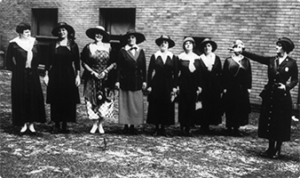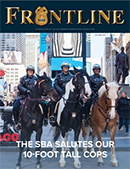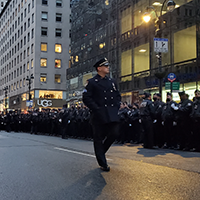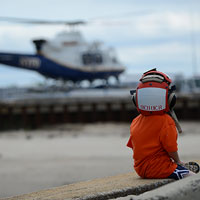Sergeants Benevolent Association of the NYPD
- Home
- Our Legacy
-
-
-
-
1918 Women Police Reserve
Women first began to appear in police departments in the early 20th century… An examination of the early history of women in policing indicates that the work of moral reformers was instrumental in the emergence of policewomen. During the late 19th century, women’s advocacy groups were heavily involved in social issues. Examples of their efforts include the creation of a separate court for juvenile offenders as well as crime prevention out-reach related to the protection of young women from immoral sexual influences.
-
-
- SBA Leadership
- Commands
- Benefits
-
-
ACTIVE BENEFITS
-
RETIREE BENEFITS
-
MORE RETIREE BENEFITS
-
-
- Resources
-
-
-
-
-
- The Frontline magazine can be read online or printed directly from this website. You can also download a copy to your computer. If you have a story you would like to submit, please contact Robert Mladinich by phone at (212) 343-5674 or by email at rmladinich@sbanyc.org.
-
-
- Donate
- Home
- Our Legacy
-
-
-
-
1918 Women Police Reserve
Women first began to appear in police departments in the early 20th century… An examination of the early history of women in policing indicates that the work of moral reformers was instrumental in the emergence of policewomen. During the late 19th century, women’s advocacy groups were heavily involved in social issues. Examples of their efforts include the creation of a separate court for juvenile offenders as well as crime prevention out-reach related to the protection of young women from immoral sexual influences.
-
-
- SBA Leadership
- Commands
- Benefits
-
-
ACTIVE BENEFITS
-
RETIREE BENEFITS
-
MORE RETIREE BENEFITS
-
-
- Resources
-
-
-
-
-
- The Frontline magazine can be read online or printed directly from this website. You can also download a copy to your computer. If you have a story you would like to submit, please contact Robert Mladinich by phone at (212) 343-5674 or by email at rmladinich@sbanyc.org.
-
-
- Donate
- Home
- Our Legacy
-
-
-
-
1918 Women Police Reserve
Women first began to appear in police departments in the early 20th century… An examination of the early history of women in policing indicates that the work of moral reformers was instrumental in the emergence of policewomen. During the late 19th century, women’s advocacy groups were heavily involved in social issues. Examples of their efforts include the creation of a separate court for juvenile offenders as well as crime prevention out-reach related to the protection of young women from immoral sexual influences.
-
-
- SBA Leadership
- Commands
- Benefits
-
-
ACTIVE BENEFITS
-
RETIREE BENEFITS
-
MORE RETIREE BENEFITS
-
-
- Resources
-
-
-
-
-
- The Frontline magazine can be read online or printed directly from this website. You can also download a copy to your computer. If you have a story you would like to submit, please contact Robert Mladinich by phone at (212) 343-5674 or by email at rmladinich@sbanyc.org.
-
-
- Donate
- Home
- Our Legacy
-
-
-
-
1918 Women Police Reserve
Women first began to appear in police departments in the early 20th century… An examination of the early history of women in policing indicates that the work of moral reformers was instrumental in the emergence of policewomen. During the late 19th century, women’s advocacy groups were heavily involved in social issues. Examples of their efforts include the creation of a separate court for juvenile offenders as well as crime prevention out-reach related to the protection of young women from immoral sexual influences.
-
-
- SBA Leadership
- Commands
- Benefits
-
-
ACTIVE BENEFITS
-
RETIREE BENEFITS
-
MORE RETIREE BENEFITS
-
-
- Resources
-
-
-
-
-
- The Frontline magazine can be read online or printed directly from this website. You can also download a copy to your computer. If you have a story you would like to submit, please contact Robert Mladinich by phone at (212) 343-5674 or by email at rmladinich@sbanyc.org.
-
-
- Donate
HISTORICAL PERSPECTIVE
1800s
The Municipal Police is formed in 1844, and renamed the Metropolitan Police in 1857. Three patrolmen are killed and 80 wounded during the Civil War Draft Riots. The Central Bureau of Detectives is established in 1882, and a year later the Department is placed under the Civil Service regulation. Female matrons are hired in 1888, and in 1891 Wiley Overton becomes the city’s first African American patrolman. In 1895, Theodore Roosevelt serves as President of the Board of Commissioners, and a year later George Garcia becomes the city’s first Hispanic officer. The 24 communities in Brooklyn and Queens are consolidated in 1898, creating today’s NYPD.
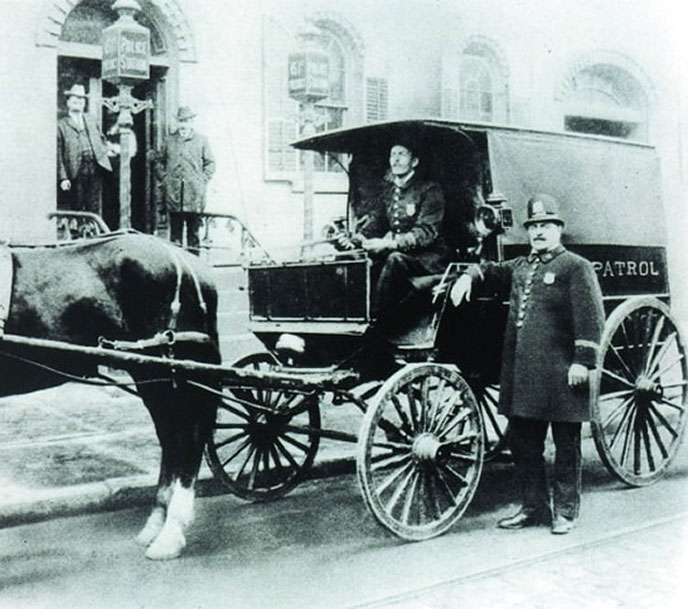
1900s
The Sergeants Benevolent Association (SBA) holds its first annual dinner at the Waldorf Astoria in 1907. The following year, traffic control becomes the NYPD’s responsibility. In 1909, Lt. Giuseppe (Joseph) Petrosino is the first NYPD Officer to be killed overseas, in Sicily, while investigating the Black Hand, the precursor to today’s Mafia. Fingerprinting is introduced as a means of identifying criminals. Mary Hamilton is appointed the first Policewoman in 1918.
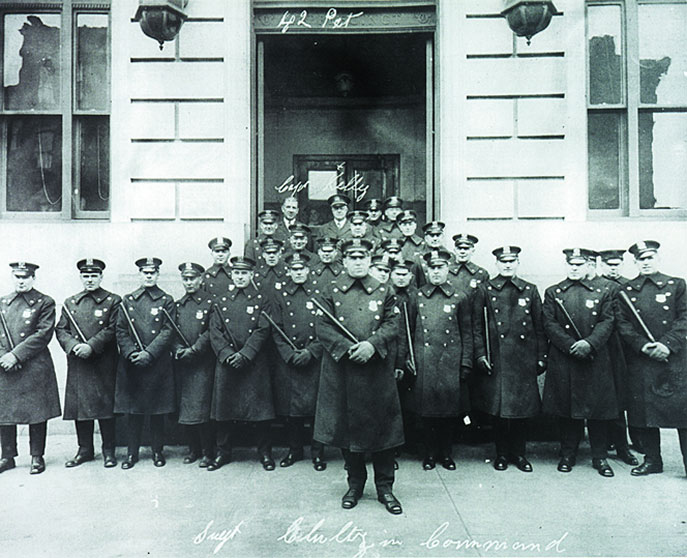
1920s
The Volstead Act is enacted in 1920, which outlaws the manufacture, transport and sale of alcohol. Known as Prohibition, it lasts until 1933 and results in 94 Officers being killed in the line of duty. The city’s population increases to nearly 7 million, and the city is known as the manufacturing, commercial and cultural capital of the world. Automobiles and motorcycles became standard modes of patrol, and in 1929 the first police airplane pursuit takes place.
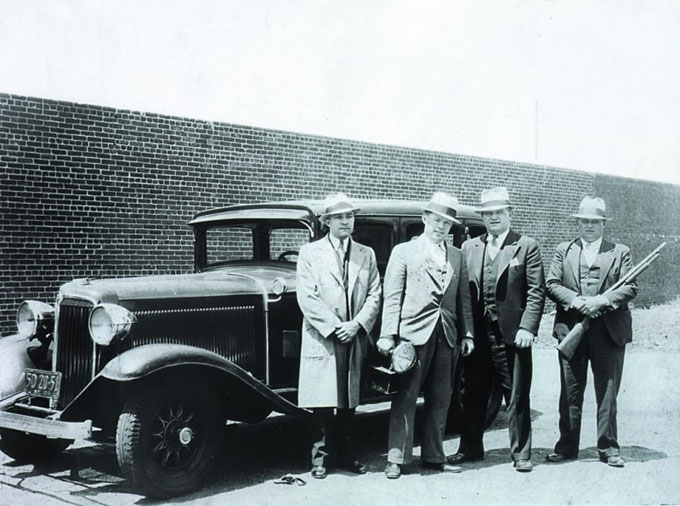
1930s
The Great Depression begins with the October 1929 stock market crash. The Emergency Service Unit is created in 1930, heavy vehicular traffic results in many bridges and tunnels being built throughout the city, and New York adapts the name the Big Apple. By decade’s end, two-way radios are installed in all police automobiles. Fiorello H. LaGuardia is elected Mayor in 1934, and he oversees the first “wiring up” of an undercover officer.
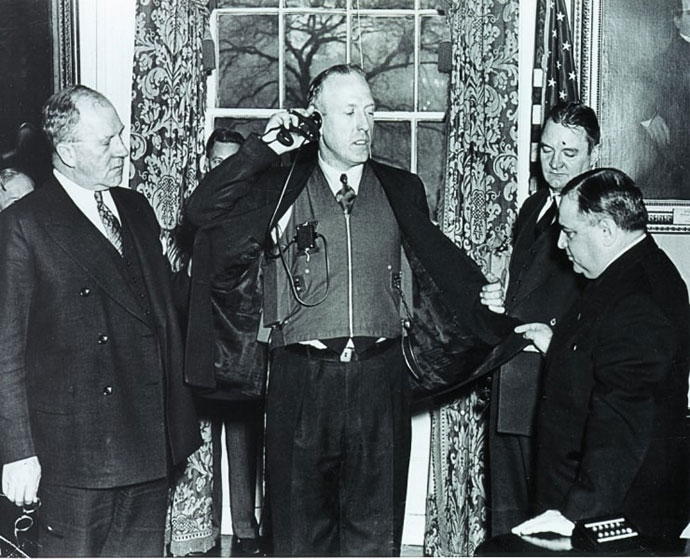
1940s
Two Bomb Squad Detectives are killed in 1940 while investigating an explosive device at the World’s Fair. World War II spawns numerous cultural and sociological changes, with women entering the workforce. After the war, men return home and the GI Bill enables them to get a college education. Three times as many college degrees were earned by Americans in 1949 than in 1940. Commercial television becomes available in 1947 and the Baby Boom officially begins.
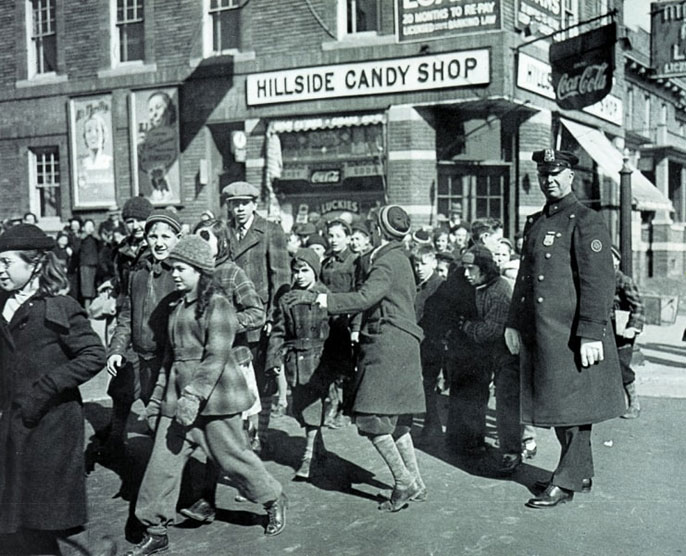
1950s
The Red Scare leads to televised hearings by anti-communist Sen. Joseph McCarthy. The Civil Defense Act of 1950 is passed, allowing the NYPD to establish an auxiliary force of volunteers. Known as the Beat Generation, the decade sees a proliferation of countercultural poets, writers and artists who openly question authority. The first Civilian Complaint Review Board is established in 1952 to investigate excessive police force. The Hispanic Society is founded by the Department’s 40 Latino Officers.
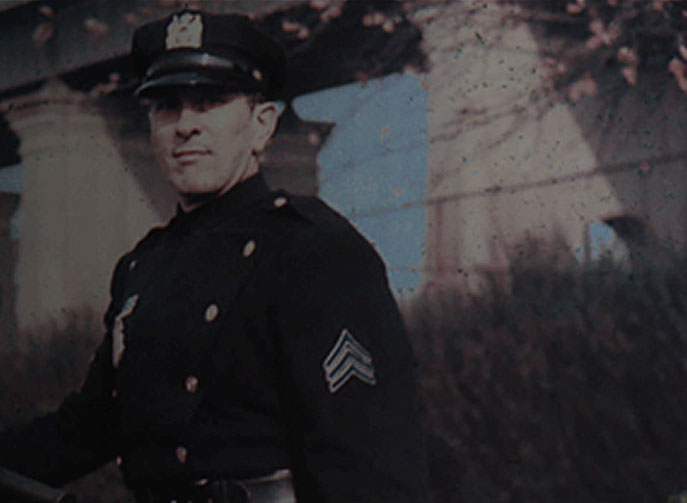
1960s
Elected President of the SBA in 1961, Harold Melnick enacts sweeping innovations that revolutionize municipal labor. The 1964 Civil Rights Act begins monumental societal changes. That same year, Lloyd Sealy becomes the first African American Precinct Commander. The Vietnam War, as well as the assassinations of U.S. President John F. Kennedy, his brother Senator Robert F. Kennedy, and Civil Rights Leaders Dr. Martin Luther King and Malcolm X, creates tremendous social unrest. One of law enforcement’s greatest innovations, the 911 system, is implemented in New York in 1969.

1970s
During this decade of social upheaval, U.S. President Richard Nixon resigns from office, the Roe vs. Wade Supreme Court ruling legalizes women’s right to choose, and the Organized Crime Control Bureau (OCCB) is founded. Two teams of NYPD partners are assassinated by revolutionaries in 1971 and 1972. Terrorists bomb the old NYPD headquarters, and in 1972 a police dog locates a bomb aboard a plane at JFK Airport. The 110-story twin towers of the World Trade Center are completed in 1970, Marjorie Lewis becomes the first female African American sergeant in 1971, and in 1972 Gertrude Schimmel becomes the first female Captain. In 1973, the Bureau of Policewomen is dismantled, the title of Police Officer replaces Patrolman and Policewoman and One Police Plaza opens as the new Police Headquarters.
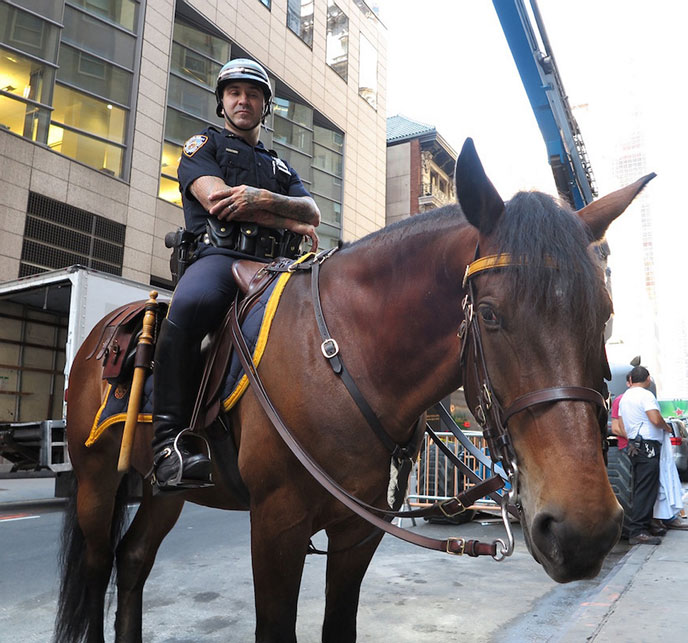
1980s
Benjamin Ward becomes the first African American Police Commissioner in 1984. Exacerbated by the crack epidemic, crime in New York is out of control with 54 Police Officers losing their lives. Among them is the city’s first woman, PO Irma Lozada of the former Transit Police Department, PO Edward Byrne, who is assassinated by drug barons while guarding the home of a witness in Queens, thus leading to federal assistance in combating the drug scourge, and POs Mike Buczek and Chris Hoban who are shot and killed just hours apart in separate incidents in Upper Manhattan in 1988. Sgt. John McCormick, a 20-year veteran assigned to Bronx Narcotics, is fatally wounded by gunfire while executing a search warrant in April 1988.

1990s
Terrorists detonate a truck bomb at the World Trade Center, killing 6 people and injuring over 1,000. Police Commissioner William J. Bratton implements a full-scale strategic attack on crime and disorder in 1994, transforming the Department from a reactive to a proactive agency. Compstat becomes the centralized management tool and crime plummets. The once separate Transit and Housing Police Departments are merged into the NYPD in 1995.
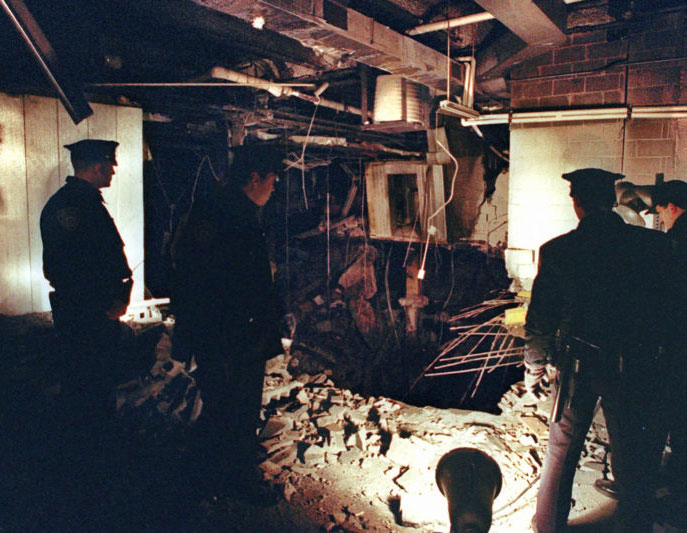
2000s
The new millennium starts with a massive celebration. The long-awaited subway World Series between the Mets and Yankees occurs. New York is considered one of the nation’s safest and most livable cities. What begins as a glorious sun-splashed day on September 11, 2001, ends in horror after terrorists hijack 4 airliners and fly them into the World Trade Center and the Pentagon, killing 3,000 people. Among them are 23 NYPD officers, including Sgts John G. Coughlin, Michael S. Curtin, Rodney C. Gillis, and Timothy A. Roy. Many more have since passed away or are ailing from 9/11 related health issues.
The SBA’s Annual Heroism Awards Dinner is held each year in honor of the 4 Sergeants who gave their lives on 9/11. They are Sgts. John G. Coughlin and Michael S. Curtin, both of whom were USMC Veterans, Rodney C. Gillis and Timothy A. Roy. A sense of optimism and hope returns to New York, but the NYPD is forever vigilant and numerous terrorist plots are thwarted.
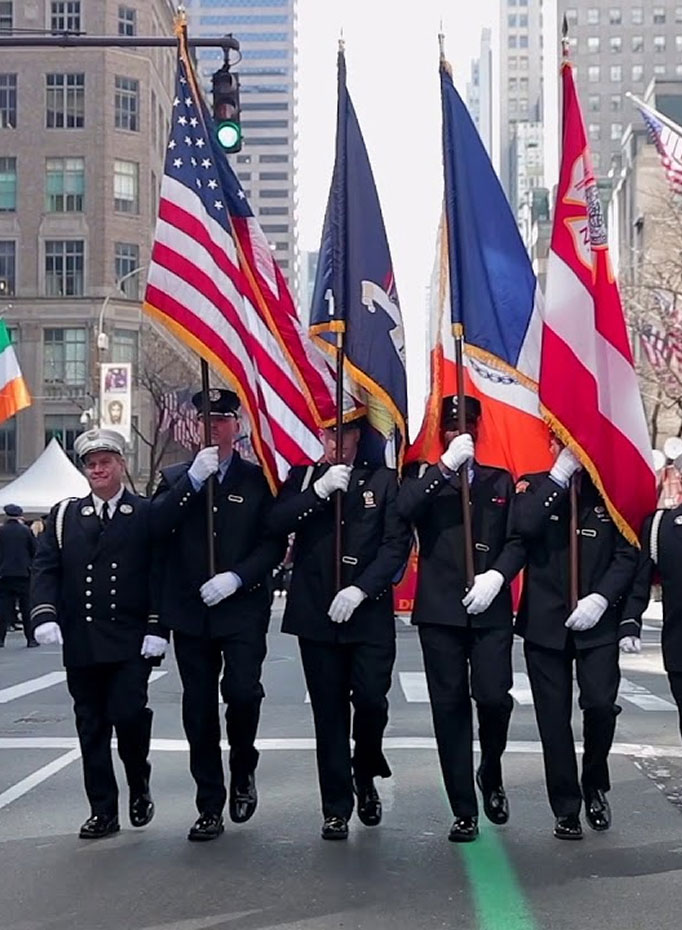
2010s
Crime strategies are transformed from proactive to reactive to satisfy the progressive ideologies of elected officials. Widespread anti-police rhetoric creates a palpable sense of danger where even the police are not safe. Police Officers Wenjian Liu and Rafael Ramos are assassinated in Brooklyn in December 2014. Over the next 10 months, Officers Brian Moore and Randolph Holder are also shot and killed by emboldened career criminals. All of the slain officers were posthumously promoted to the rank of Detective First Grade.
The NYPD has always been – and will always be – universally regarded as the finest police department in the world. And, we will always maintain that being an NYPD sergeant is the toughest job in the world.
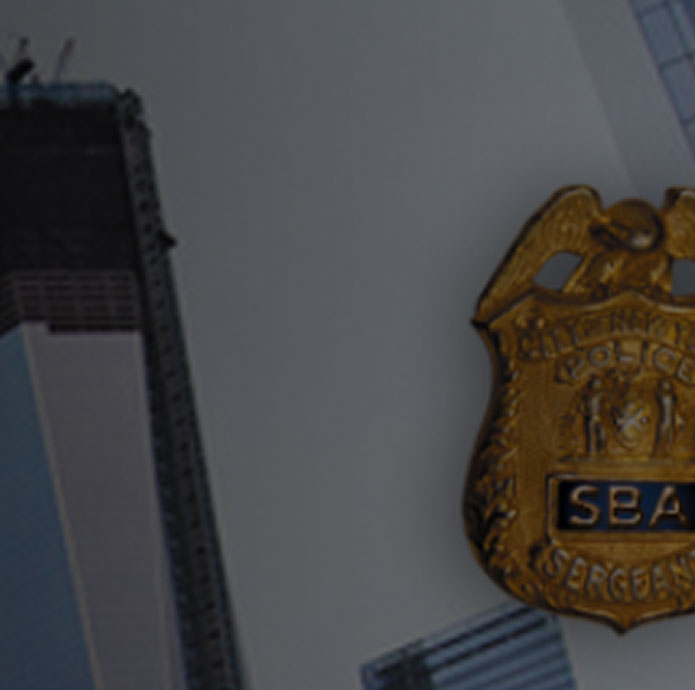
 SERGEANTS BENEVOLENT ASSOCIATION
SERGEANTS BENEVOLENT ASSOCIATION
